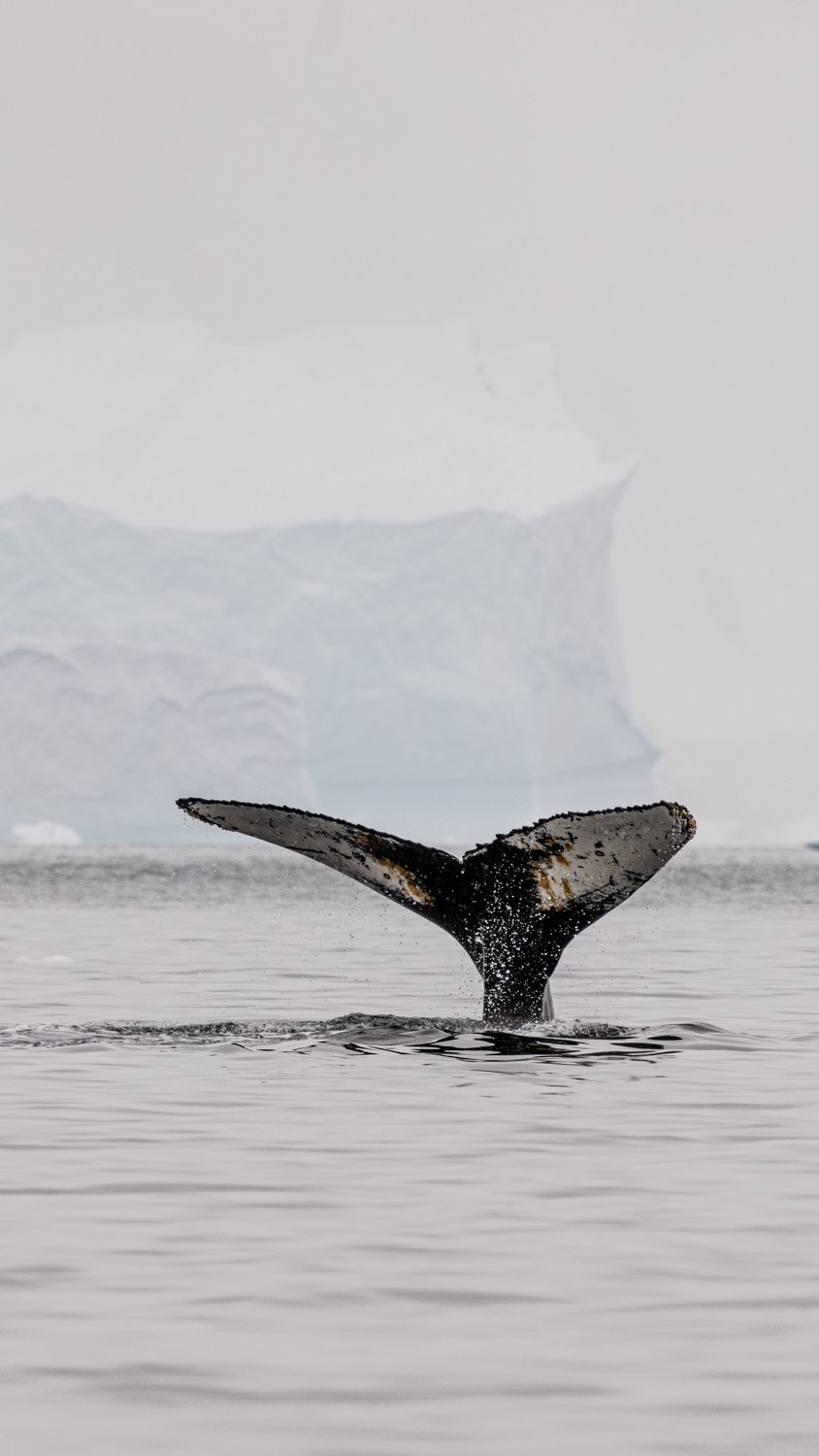Bubble Feeding: A Humpback Whale Ballet
The world looks different from above! Humpback whales are amazing creatures known for their incredible intelligence and ability to perform a wide range of behaviours. Some have developed this beautiful, ballet-like way to feed.
I see a lot of amazing things while working in Antarctica, but the views from the drone always surprise me. Humpback Whales will sometimes Bubble Feed, also called Bubble Netting or Bubble Net-Feeding. The whales need at least two to do this, but has been recorded with groups as large as twenty.
Wildlife Choreography
They work together to circle and confuse a school of small prey, eventually disorienting them and one whale will trap them in a bubble with its blowhole. One whale will sound a feeding call and then the whales work together with synchronised movements swimming up towards the surface to then eat. Their prey can be various types of small fish or krill. Krill is one of the most common food sources for animals in Antarctica, seals, penguins, albatrosses, seabirds, fish and other whales all feed on krill.
Humpback Whales Bubbles Feeding in Antarctica, February 2024.
A Humpback Whale Fluking. Portal Point, Antarctic Peninsula
Learned Behaviour
This isn't instinct. This is a learned behaviour. This cooperative hunting technique is thought to have been taught by generation after generation of whales. Not all Humpback Whales can do this, but it has been documented in Southeast Alaska, Oceania, the North Atlantic and Antarctica (like my video). This shows how intelligent and adaptable these creatures are. Seeing how they communicate and coordinate their movements to achieve their goal is incredible.
We Aren’t That Different
The fact that not all Humpback Whales can perform this behaviour suggests that it requires a certain level of cognitive ability and social learning. They use different bubble patterns (ring vs spiral) or types (bubble column vs bubble mist) across the world. Scientists suspect this is because of differing species of prey but could be the result of the differences in the evolution of bubble netting in the separate populations–much like the evolution of language is different in human populations around the globe.
Scientists have found they turn right 90% of the time. This means whales are predominantly "right-handed" in a similar ratio to humans! Not so different from these gentle giants.
A Humpback Whale feeding on Krill. Two Hummock Island, Antarctic Peninsula
Whales of The Arts
The intelligence and complexity of Humpback Whales is not a surprise. Their “songs” or vocalizations are famous, and many people use these sounds to help them fall asleep. This “music” has been well documented and continues to be a major focus of research. It is thought to be the most complex vocalization in any non-human species on the planet. The intelligence and complexity of Humpback whales was even used as the focus of Star Trek IV: The Voyage Home.
Danger From Humans
Another focus of Star Trek IV: Voyage Home was the fear of near extinction of the Humpback Whales. Humans almost cause the extinction of these giant geniuses. Luckily for us, the majority of the world’s Humpback population has bounced back after major attention and changes in many whaling laws around the world. The World Wildlife Foundation now lists Humpbacks as “Least Concern”. However, some subpopulations are at risk in the Arabian Sea, the western North Pacific, the west coast of Africa, and the South Pacific subpopulations in portions of Oceania.
The footage in the above video was captured while working with Albatros Expeditions and in accordance with IAATO guidelines and with the proper permits and permissions. Antarctica is the last wilderness and an important place to protect. Antarctic content and expeditions should create a greater understanding of the environment. Antarctic Ambassadors is a collaboration of people who care passionately about Antarctica and protecting its unique landscape. You can learn about how to become an Antarctic Ambassador by visiting the IAATO website here: https://iaato.org/antarctic-ambassadors/




